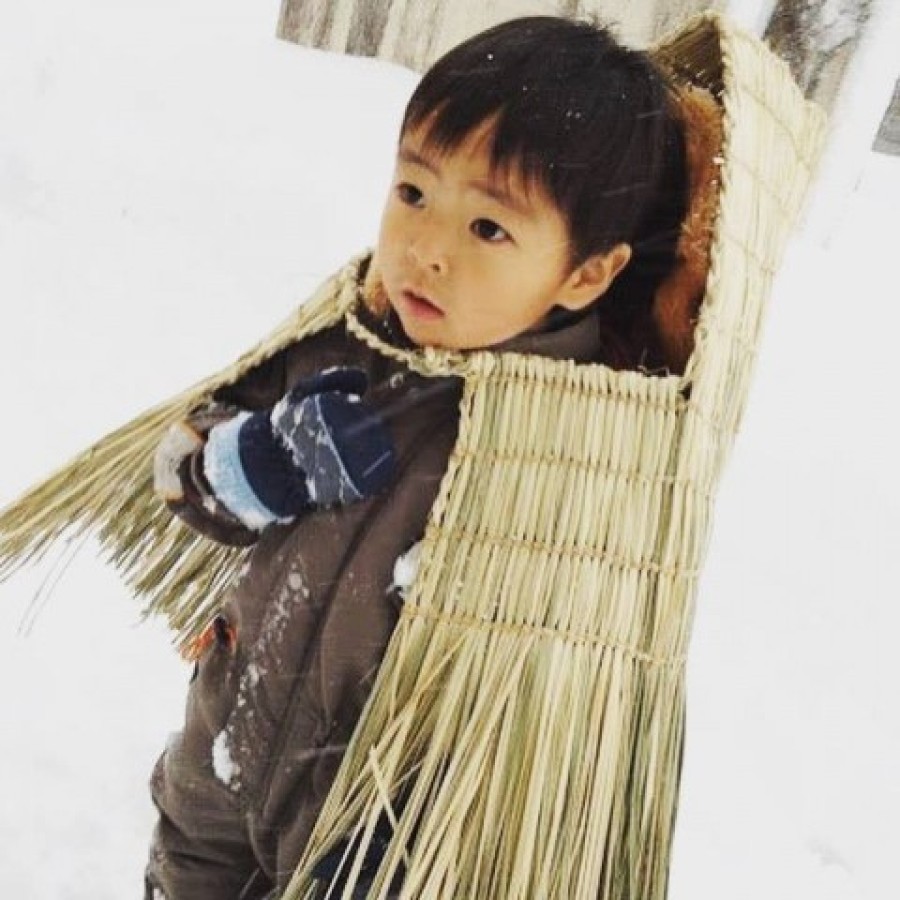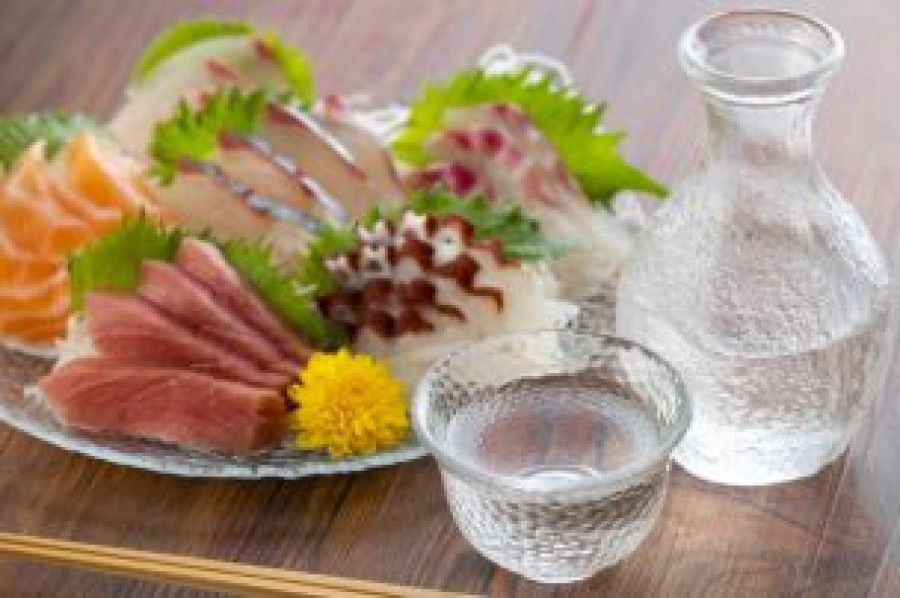The 'Echigo Nagaoka - Machi-meguri' was held in Nagaoka City. This tour project was organised to get to know the areas that were merged in the Heisei merger. The main feature of the tour is to connect two of the merged regions by some common points and to find unexpected connections between the regions. The tour is designed to visit places chosen by local residents who are members of the organising committees of each region and who say, "I want you to see this place! The tour is designed to visit places chosen by local residents who are members of the organising committee of each region, so you can see maniacal places that you cannot see in ordinary sightseeing tours.
![Maniac tour of the 'Boshin War' in Yoita and Teradomari [Echigo-Nagaoka, Machi-meguri].](https://niigata-repo.com/wp-content/uploads/2014/11/IMGP4636-546x361.jpg)
On 13 October, I participated in a tour of two regions, Yoita and Teradomari. The theme of the tour was "Journey to unravel the history of Boshin", which means a tour of areas related to the Boshin War. The schedule for the day was as follows: in the morning we toured the Yoita area and in the afternoon we toured the Teradomari area.
- Assembly: 8:30am.
- Morning] Yoita area "Visit to the Historical and Folk Museum, Kanetsugu Ofune Museum" - "Walking around the area" - "Talk about the Boshin War in the Yoita area (Mr Tadaya Yamazaki)".
- Lunch] Teradomari area "Centre Okouzu".
- Afternoon] Teradomari area 'Presentation' - 'Shogunate military camp ruins' - 'Jozenji Temple' - 'Kanegasaki fierce battle site walk'
- Dismissed 17:00
![Maniac tour of the 'Boshin War' in Yoita and Teradomari [Echigo-Nagaoka, Machi-meguri].](https://niigata-repo.com/wp-content/uploads/2014/11/IMGP4642-546x361.jpg)
The Boshin War was fought between the old shogunate forces and the new Meiji government forces. In Niigata Prefecture, the battle centred on Nagaoka Castle, known as the Hokuetsu War, is well known. The Nagaoka clan fought as part of the old shogunate army, so at first glance it would appear that all of Niigata Prefecture was on the side of the old shogunate, but in fact the Yoita clan fought on the side of the new government!
(i) Yoita 'Historical and Folklore Museum and Kanetsugu Osafune Museum'.
![Maniac tour of the 'Boshin War' in Yoita and Teradomari [Echigo-Nagaoka, Machi-meguri].](https://niigata-repo.com/wp-content/uploads/2014/11/IMGP4646-546x361.jpg)
Yoita is the home of Kanetsugu Naoe from the historical drama Tenchijin, whose castle was the home of Kanetsugu Yoita Castle. The first place we came to was the Kanetsugu Ofune Museum, Yoita's history and folklore museum. Incidentally, 'Ofuna' is 'Ofuna (Sen)', who was Kanetsugu's wife. Note that this is not "Fune" from Sazae-san.
![Maniac tour of the 'Boshin War' in Yoita and Teradomari [Echigo-Nagaoka, Machi-meguri].](https://niigata-repo.com/wp-content/uploads/2014/11/IMGP4647-546x361.jpg) There is a statue of Naoe Kanetsugu, but it was not mentioned on the day.
There is a statue of Naoe Kanetsugu, but it was not mentioned on the day.
Although we are tempted to look at materials related to Naoe Kanetsugu, the theme of this year's workshop is the Boshin War. We will learn about the history of the Boshin War in Yohita, without looking at Kanetsugu.
![Maniac tour of the 'Boshin War' in Yoita and Teradomari [Echigo-Nagaoka, Machi-meguri].](https://niigata-repo.com/wp-content/uploads/2014/11/IMGP4653-546x361.jpg)
![Maniac tour of the 'Boshin War' in Yoita and Teradomari [Echigo-Nagaoka, Machi-meguri].](https://niigata-repo.com/wp-content/uploads/2014/11/IMGP4658-546x361.jpg)
The Yoita clan still has the "Yoita Betsuin Nisshi" and the "Yoita Clan History", which record the battles in Yoita during the Boshin War in detail. For example, "On 19 May, the commander of the Western Army, Guntaro Miyoshi, advanced to Makishita and plotted to land in front of the enemy, while Ogawa Shozaburo, a Yoita clan member, carried more than ten boats to Makishita while under fire".
![Maniac tour of the 'Boshin War' in Yoita and Teradomari [Echigo-Nagaoka, Machi-meguri].](https://niigata-repo.com/wp-content/uploads/2014/11/IMGP4660-546x361.jpg)
At the Kanetsugu Osafune Museum, the matters in those logbooks are explained using dioramas. Where were the defence lines built and what battles were fought? Incidentally, in the battle that started at Kanegasaki-guchi in Yoita, the number of troops on the new government side in Yoita was 255, while the old shogunate army had 1, 240 troops. Thereafter, with reinforcements from the new government side, the battle became a shtick. However, it is surprising that such detailed information has survived despite the fact that it was a small battle in a very small area of the Boshin War, which was a major war.
![Maniac tour of the 'Boshin War' in Yoita and Teradomari [Echigo-Nagaoka, Machi-meguri].](https://niigata-repo.com/wp-content/uploads/2014/11/IMGP4657-546x361.jpg) The Warring States section is well stocked, although I didn't look at it this time!
The Warring States section is well stocked, although I didn't look at it this time!
![Maniac tour of the 'Boshin War' in Yoita and Teradomari [Echigo-Nagaoka, Machi-meguri].](https://niigata-repo.com/wp-content/uploads/2014/11/IMGP4662-546x361.jpg)
②With the Board "Regional Dispersal Policy"
![Maniac tour of the 'Boshin War' in Yoita and Teradomari [Echigo-Nagaoka, Machi-meguri].](https://niigata-repo.com/wp-content/uploads/2014/11/IMGP4668-546x361.jpg)
After viewing the diorama, visitors can walk around the Yoita area. First, we will walk along 'Tenchijin Street', looking up at the ruins of Yoita Castle. We did not stop at the castle ruins, but were introduced to some maniac spots that are very minor in Japan, such as the place where the retainer "Matsushita Genzaemon" lived at the time of the Boshin War. However, we had to take our hats off to the volunteer guides for their amount of knowledge.
![Maniac tour of the 'Boshin War' in Yoita and Teradomari [Echigo-Nagaoka, Machi-meguri].](https://niigata-repo.com/wp-content/uploads/2014/11/IMGP4673-546x361.jpg)
Unfortunately, it was raining that day. While holding an umbrella, we looked up at the Ii Shrine, which originated from the last Yoita domain lord 'Ii Naoyasu', and then went to the ruins of the Ii family castle building (now the Fureai Exchange Centre).
![Maniac tour of the 'Boshin War' in Yoita and Teradomari [Echigo-Nagaoka, Machi-meguri].](https://niigata-repo.com/wp-content/uploads/2014/11/IMGP4676-546x361.jpg)
![Maniac tour of the 'Boshin War' in Yoita and Teradomari [Echigo-Nagaoka, Machi-meguri].](https://niigata-repo.com/wp-content/uploads/2014/11/IMGP4675-546x361.jpg)
We were guided through a light but wet rain shower.
![Maniac tour of the 'Boshin War' in Yoita and Teradomari [Echigo-Nagaoka, Machi-meguri].](https://niigata-repo.com/wp-content/uploads/2014/11/IMGP4678-546x361.jpg)
Signs with historical origins, such as the one in the picture, were placed everywhere in the castle town of Yoita. We didn't have time to look around this time, but it looks like an interesting area to walk around.
From the Fureai Exchange Centre, we once took a bus to the Hon Yoita area. The bus made many turns along the way. The bus made many turns on the way to the Hon-Yoita area, and we thought to ourselves, "What a town with so many curves, you can't go straight". The tour guide told us that the town was built in such a way that the enemies who wanted to attack the castle would not be able to advance in large numbers in a line. You will surely feel this when you drive through the town of Yoita!
![Maniac tour of the 'Boshin War' in Yoita and Teradomari [Echigo-Nagaoka, Machi-meguri].](https://niigata-repo.com/wp-content/uploads/2014/11/IMGP4683-546x361.jpg)
Then came the Hon Yoita area, which was also the main battlefield of Yoita in the Boshin War. In war, houses and other buildings become obstacles, causing the enemy to hide and delay their advance. For this reason, they were all burnt to the ground. It is said that here in the Hon Yoita community, all the houses were burnt down, leaving only about three houses.
Everyone thinks about the diorama and recalls how the battle was fought at the time.
(iii) Yoita: 'Talk about the Boshin War in the Yoita area (Mr Tadaya Yamazaki)'
![Maniac tour of the 'Boshin War' in Yoita and Teradomari [Echigo-Nagaoka, Machi-meguri].](https://niigata-repo.com/wp-content/uploads/2014/11/IMGP4694-546x361.jpg)
Next, at the Hon Yoita community centre, Mr Tadaya Yamazaki of the Hon Yoita Castle Site Preservation Society told us about the Boshin War in the Yoita area.
![Maniac tour of the 'Boshin War' in Yoita and Teradomari [Echigo-Nagaoka, Machi-meguri].](https://niigata-repo.com/wp-content/uploads/2014/11/IMGP4704-546x361.jpg)
Mr Yamazaki was of course not born at the time of the Boshin War, but he has heard many stories about that time from his parents and grandparents.
![Maniac tour of the 'Boshin War' in Yoita and Teradomari [Echigo-Nagaoka, Machi-meguri].](https://niigata-repo.com/wp-content/uploads/2014/11/IMGP4705-546x361.jpg)
![Maniac tour of the 'Boshin War' in Yoita and Teradomari [Echigo-Nagaoka, Machi-meguri].](https://niigata-repo.com/wp-content/uploads/2014/11/IMGP4707-546x361.jpg)
And when he was a child, the balls of guns used in the Boshin War fell on mountains and other places.
![Maniac tour of the 'Boshin War' in Yoita and Teradomari [Echigo-Nagaoka, Machi-meguri].](https://niigata-repo.com/wp-content/uploads/2014/11/IMGP4711-546x361.jpg)
When I was actually allowed to hold it, it was very heavy and somehow made me feel a little closer to the war.
(iv) Lunch at Teradomari 'Centre Okouzu'.
![Maniac tour of the 'Boshin War' in Yoita and Teradomari [Echigo-Nagaoka, Machi-meguri].](https://niigata-repo.com/wp-content/uploads/2014/11/IMGP4720-546x361.jpg)
Now it's time for lunch, a treat with local delicacies every time! This time it's food from the kappo inn Yamacho in Teradomari Nozumi.
![Maniac tour of the 'Boshin War' in Yoita and Teradomari [Echigo-Nagaoka, Machi-meguri].](https://niigata-repo.com/wp-content/uploads/2014/11/IMGP4719-546x361.jpg)
Gosh, it's gorgeous! The menu is full of seafood, just like Teradomari, and even comes with crab soup. The volume was amazing!
(v) Teradomari, "Presentation".
Now that you've had your fill of delicious food, the afternoon will take you on a tour of the Boshin War in the Teradomari area.
![Maniac tour of the 'Boshin War' in Yoita and Teradomari [Echigo-Nagaoka, Machi-meguri].](https://niigata-repo.com/wp-content/uploads/2014/11/IMGP4724-546x361.jpg)
The presentation is taken directly at the lunch venue, Centre Okouzu.
Teradomari was the territory of the 'Kuwana clan' at the end of the Edo period. Kuwana clan? That doesn't sound familiar. Actually, the Kuwana clan is now in Mie Prefecture. It was ruled by the Matsudaira clan, a relative of the Tokugawa family, and was in charge of several Echigo-Tsumari provinces. That is why Teradomari was on the side of the former Shogunate forces.
![Maniac tour of the 'Boshin War' in Yoita and Teradomari [Echigo-Nagaoka, Machi-meguri].](https://niigata-repo.com/wp-content/uploads/2014/11/IMGP4733-546x361.jpg)
There was the only naval battle in the Echigo area called the Teradomari Offshore Battle, and battles against the Yoita clan were fought at Kanegasaki (Teradomari) and Hon Yoita (Yoita). I can't believe I can get a presentation along with the slides on a town tour! It's amazingly rare, isn't it? It was easy to understand.
(6) Terapo "Shogun's Military House Ruins".
![Maniac tour of the 'Boshin War' in Yoita and Teradomari [Echigo-Nagaoka, Machi-meguri].](https://niigata-repo.com/wp-content/uploads/2014/11/IMGP4761-546x361.jpg)
Then out! First, go to the place where the old Shogunate army camp was located.
![Maniac tour of the 'Boshin War' in Yoita and Teradomari [Echigo-Nagaoka, Machi-meguri].](https://niigata-repo.com/wp-content/uploads/2014/11/IMGP4765-546x361.jpg)
This is not only the site of a Shogunate military camp, but also the place where a great Teradomari man called 'Gunpei Endo' opened a private school called 'Saikarukujuku' to teach learning. In 1860, at the end of the Edo period (1603-1868), he opened a private school called Saikarukujuku in this area, where about 100 people studied at any one time, and a total of 2,000 people studied here. The Shogunate's army must have used the school buildings as its headquarters.
![Maniac tour of the 'Boshin War' in Yoita and Teradomari [Echigo-Nagaoka, Machi-meguri].](https://niigata-repo.com/wp-content/uploads/2014/11/IMGP4771-546x361.jpg)
Although the weather was unfavourable on the day, the Seigarujuku was also known as 'Taigakukan' because of the spectacular view of the Echigo Mountains at the back of the plain. It is a moving experience to think that our predecessors also learnt from this view.
(7) Temple "Shosenji".
![Maniac tour of the 'Boshin War' in Yoita and Teradomari [Echigo-Nagaoka, Machi-meguri].](https://niigata-repo.com/wp-content/uploads/2014/11/IMGP4789-546x361.jpg)
Next came Jozenji Temple. This temple is said to have been visited by people with their heads in their hands during the Boshin War (1868-1868), who came here to ask for a memorial service.![Maniac tour of the 'Boshin War' in Yoita and Teradomari [Echigo-Nagaoka, Machi-meguri].](https://niigata-repo.com/wp-content/uploads/2014/11/IMGP4794-546x361.jpg)
There is also a tomb of a Kuwana clan member, which is still associated with Boshin.
![Maniac tour of the 'Boshin War' in Yoita and Teradomari [Echigo-Nagaoka, Machi-meguri].](https://niigata-repo.com/wp-content/uploads/2014/11/IMGP4804-546x361.jpg)
(viii) Teradomari: "Kanegasaki Fierce Battlefield Site Walk".
![Maniac tour of the 'Boshin War' in Yoita and Teradomari [Echigo-Nagaoka, Machi-meguri].](https://niigata-repo.com/wp-content/uploads/2014/11/IMGP4815-546x361.jpg)
The last place we came to was the Kanegasaki area. This or the battlefield of the Yo-ita opening of the war. The Hon Yoita introduced earlier and this Kanegasaki are the battlefields where the mutual offensive and defensive battles took place. We came here by bus, but the area was so large that it felt tremendous when we wondered if the infantry had been walking around here.
![Maniac tour of the 'Boshin War' in Yoita and Teradomari [Echigo-Nagaoka, Machi-meguri].](https://niigata-repo.com/wp-content/uploads/2014/11/IMGP4821-546x361.jpg)
Although there are no signs of war left now, I was reminded of the fact that there was once a battle.
the end
Bus tour of Yoita and Teradomari over the Boshin War. The bus tour went around the places you would never go if you just came here for sightseeing! We went around so much that you would never go there if you came here for normal sightseeing. The maniac level was quite high! I have the impression that this was the most maniacal of all the city tours.
However, I was reminded that this is the kind of town you can enjoy if you dig deep into the local history.
The Echigo Nagaoka Machi Meguri is organised and managed by the Echigo Nagaoka Machi Meguri Executive Committee. If you are interested in participating or have any questions, please check the information of the Echigo Nagaoka Machi Meguri Executive Committee!
- Official facebook page: https://www.facebook.com/pages/%E8%B6%8A%E5%BE%8C%E9%95%B7%E5%B2%A1%E3%81%BE%E3%81%A1%E3%82%81%E3%81%90%E3%82%8A2014 /694356533975334
- Kolite organisation page: http://nkyod.org/group-list/machimeguri
advertisement








